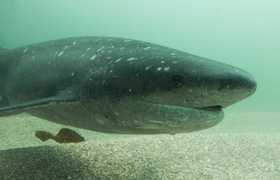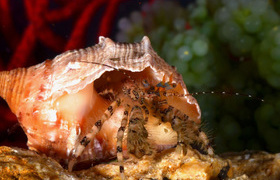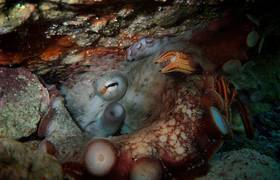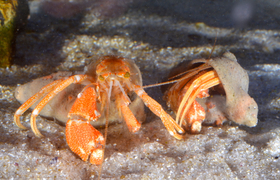My family and other animals
10 April 2019 | Story Helen Swingler. Read time 6 min.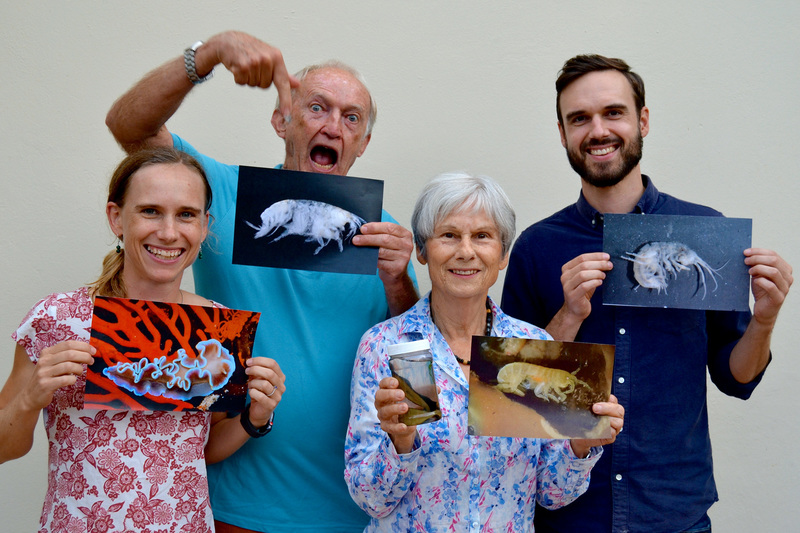
On her recent birthday University of Cape Town (UCT) alumnus Dr Roberta Griffiths received a rather unusual gift: a framed photograph of an amphipod, or sea shrimp, that has been named in her honour. And about time, as everyone else in her family had a species named after them many years ago.
The gift came courtesy of her husband, Emeritus Professor Charles Griffiths, marine biology doyen in the Department of Biological Sciences. In a career that spans nearly 50 years, Griffiths has been an author of papers discovering and describing over 100 species new to science. He also has several species named after himself, including a genus of shrimp called Griffithsius.
“I had previously described shrimps in this group, so when some Canadian scientists created this new genus back in 1994, they named it after me,” he explained.
“Taxonomists often name things after other taxonomists that work on the same group, but it is not ethical to name animals after yourself.”
The Griffiths children also both have species named after them.
A sea slug by any other name
Back in 1985, Roberta, who was then also working as a marine biologist, named a particularly pretty sea slug, or nudibranch, after their young daughter Melinda (later to become a UCT PhD graduate), albeit with a convoluted arrangement of her name: Leminda millecra.
“The name Melinda had already been used for a genus of polychaete worms and so the same name cannot be used for any other genus, even in another animal group,” said Griffiths.
“Thus, Roberta had to switch around the [letters] in Melinda’s name to create the new genus name.”
Leminda millecra is a large and spectacular species of nudibranch in the family Charcotiidae and is found only in South African waters. While Roberta discovered the animal, it later came to the attention of Rhodes University researchers, who have found that it contains an anti-oesophageal cancer chemical.
“Because sea slugs don’t have shells, they have to protect themselves against predation by secreting toxic chemicals. That’s why they are so brightly coloured, to announce ‘I’m poisonous, don’t eat me’,” Griffiths explained.
“That also makes them a big target for biochemists who are looking for biologically active chemicals. This shows that describing new species is not just an academic exercise but can have other important economic or medical repercussions.”
Discovery on a toilet break
In 1995 Griffiths also named a genus of freshwater shrimp Mathamelita, after the couple’s son, Matthew. And there’s a charming story attached to this discovery.
When Matthew was three years old the family were on holiday in Knysna. At the time, Griffiths had been working on freshwater shrimps which only occur in the extreme South Western Cape, with a range from Ceres to Swellendam.
“We were driving up this narrow mountain pass and Matthew needed a pee,” said Griffiths.
“I found this layby which had a lovely little stream running across it.”
Like any good biologist, he had his sampling net stuck behind the seat of the car, so while his son was busy, he checked out what was in the stream.
“And there were these shrimps, which weren’t supposed to be found in this part of the country!”
He collected several specimens and, once back in Cape Town, put them under the microscope.
“It turned out to be a new genus endemic to the Knysna area,” said Griffiths.
“Of course, it had to be named after Matthew and I wrote in the paper that a pee stop had led to the discovery of the species.”
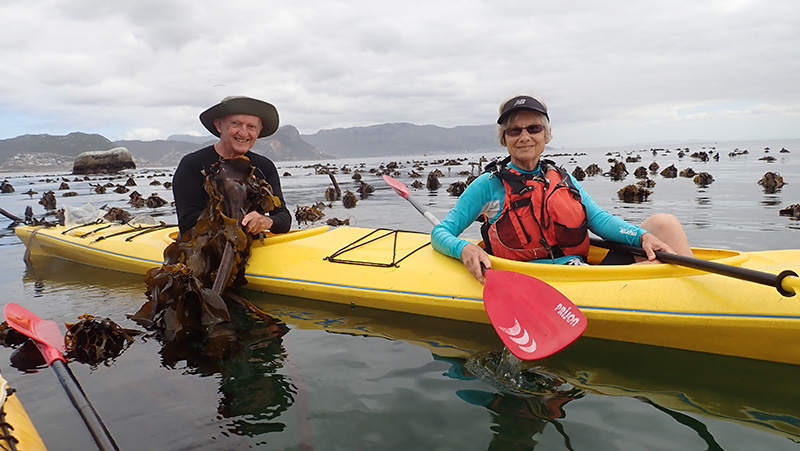
“Her species also had to be up to standard. It couldn’t be a parasitic worm or something.”
After that, the only family member without their own species was Roberta. The pressure was on.
“Her species also had to be up to standard,” Griffiths said.
“It couldn’t be a parasitic worm or something… I’ve had it in my mind for many years that Roberta must have something named after her, but the right thing just had to come along. Then in 2017 we found this unknown shrimp in False Bay that burrows into the heads of kelps.
“I thought this had the right ring to it, as both amphipod shrimps and kelp beds have played important parts in [our life] together as marine biologists. We met while I was doing my PhD on amphipods and subsequently both worked together on a research programme called the Kelp Bed Project.
“I also liked the idea that that these shrimps construct their own homes in the kelps, within which they rear their families.”
Kelp-burrowing shrimp
Morphologically, the new species is best distinguished by strong rows of dorsal spines on their “tails”, which appear to be used like “drill bits” to excavate kelp tissue and create the burrows where they raise their young.
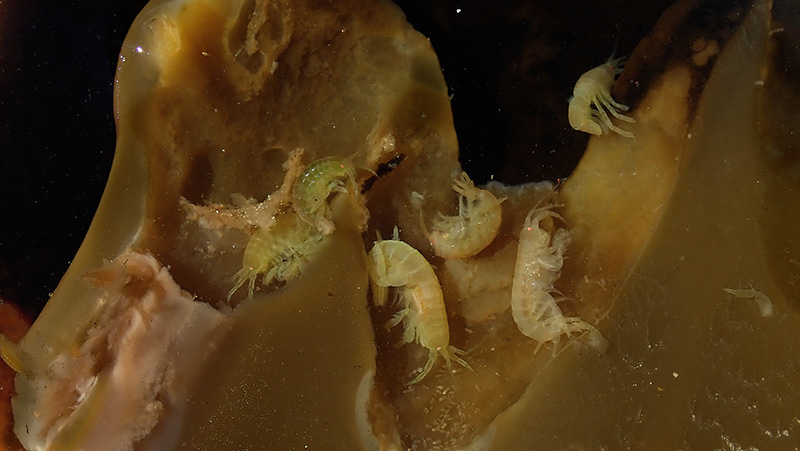
The paper describing this shrimp has just been published and the species name is Sunamphitoe roberta. Griffiths is surprised that it hasn’t been found before, because many people have worked on kelps in South Africa without noticing this animal, which is actually quite common and, at about 2cm long, is relatively big for this group of shrimps.
While writing up his discovery he kept the name of the species secret – until he presented Roberta with a framed picture of the shrimp, with its new name, on her birthday.
(Headline note: With apologies to naturalist Gerald Durrell whose autobiographical My Family and Other Animals describes the years that he lived with his siblings and widowed mother on the Greek island of Corfu between 1935 and 1939.)
 This work is licensed under a Creative Commons Attribution-NoDerivatives 4.0 International License.
This work is licensed under a Creative Commons Attribution-NoDerivatives 4.0 International License.
Please view the republishing articles page for more information.







